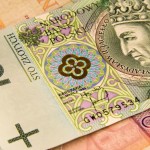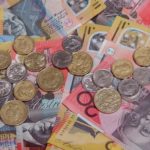Gold swung between gains and losses but hovered around its previous closing price on Friday after the metal posted its biggest daily advance since two weeks yesterday as the U.S. Department of Labor reported more people had filed for initial unemployment benefits last week. However, the precious metal remained pressured on Friday as market players weighed speculation that Fed may taper its monetary easing program in September.
On the Comex division of the New York Mercantile Exchange, gold futures for December delivery traded at $1 309.00 per troy ounce at 7:50 GMT, down 0.07% on the day. Prices held in range between days high and low of $1 316.10 and $1 306.30 an ounce respectively. The precious metal rose 2.17% on Thursday, its biggest daily advance since more than two weeks, trimming its weekly decline to 0.2% so far after plunging 1.66% the previous week.
Gold rose yesterday as the U.S. Department of Labor reported that the number of people who filed for initial jobless benefits rose by 5 000 to a seasonally adjusted 333 000 in the week ending August 3. The previous week’s reading was revised upward by 2 000 from 326 000. Last week’s figure however outperformed analysts’ expectations for an increase by 8 000 to 336 000.
The projections for a rise and the following confirmation laid pressure on the U.S. dollar, which trades inversely to dollar-denominated commodities. Weakening of the greenback makes such raw materials cheaper for foreign currency holders and boosts their appeal as an alternative investment. The dollar index, which tracks the dollar’s performance against six major counterparts, traded at 81.08 at 7:51 GMT, remaining flat on the day. The U.S. currency gauge fell to 81.01 earlier in the day, the lowest since June 18, and is marking a fifth consecutive daily decline, extending current weeks fall to 1.1%.
Gold has lost 22% this year amid expectation for an earlier-than-expected deceleration of Feds Quantitative Easing program. The metal is used mainly as a hedge against inflation, which accelerates when a central bank eases money supply. An exit from a program such as Quantitative Easing would deliver a heavy blow to gold’s price as its demand will crumble. According to a Bloomberg survey of analysts last month, fifty percent of the 54 economists expect Fed to taper its Quantitative Easing program in September.
Fed Bank of Chicago President Charles Evans, who was one of Quantitative Easing’s supporters, said on Tuesday that there has been a “good improvement” in the labor market and indicated the central bank’s monetary easing program might be decelerated in September. FOMC’s next meeting is scheduled for September 17-18 when policy makers will review their assessment on the economic recovery pace.
On Monday, Federal Reserve Bank of Dallas President Richard Fisher, one of Quantitative Easing’s critics, commented that the central bank is getting closer to tapering the monetary easing program. He said in a speech in Portland, Oregon: “Financial markets may have become too accustomed to what some have depicted as a Fed ‘put. Some have come to expect the Fed to keep the markets levitating indefinitely. This distorts the pricing of financial assets” and can lead to “serious misallocation of capital.”
Atlanta Fed President Dennis Lockhart made similar comments and Cleveland Fed President Sandra Pianalto said on Wednesday the central bank will consider reducing bond purchases if the labor market continues to improve. According to a Bloomberg survey of analysts last month, fifty percent of the 54 economists expect Fed to taper its Quantitative Easing program in September.
Meanwhile, gold was also pressured as China economic data showed a steady inflation in the worlds second biggest economy, thus reducing demand for hedge tools. China’s consumer inflation remained stable with a 2.7% rise year-on-year, aligning with the previous month’s reading but underperforming expectations for a 2.8% rise. On a monthly basis, CPI met projections at a 0.1% increase. Year-on-year, China’s Producer Price Index (PPI) declined by 2.3%, above the anticipated 2.2% but outdid the preceding period’s 2.7% fall.





